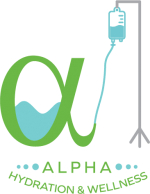Intravenous (IV) therapy involves the delivery of fluids for treatment or fluid replacement directly into a vein. It has been in use for years in hospitals and other healthcare facilities to treat a variety of health conditions, not the least of which is dehydration and certain nutrient-absorption problems.
And while it has also gained popularity in the form of IV fluids for a hangover, its availability in boutique clinics and health spas has made it more accessible to everyone.
However, even though there have already been a number of studies and articles written about IV therapy and its benefits, certain myths and misconceptions about it persist. Below are five of them:
1. IV THERAPY IS ONLY USEFUL IF YOU ARE SICK
It is true that IV therapy is recommended for people suffering from fibromyalgia, migraine, and chronic fatigue syndrome. However, you don’t need to suffer from a medical condition to benefit from IV drips.
Most IV drip formulations contain magnesium, vitamin C, calcium and some B vitamins, which are all beneficial for optimum health. So people who want to boost their athletic performance or stamina, nutritional intake, energy levels, and immune system can also benefit from IV therapy.
2. IV VITAMINS CAN BE TAKEN AT ANY DOSAGE
A high concentration of vitamins and minerals is delivered straight to the bloodstream during IV therapy. However, the dosage always depends on the individual. For example, the formulation of an IV drip for someone recovering from surgery would be different from IV fluids for a hangover, or IV therapy for a person suffering from seasonal allergies.
To reap the benefits and avoid over-dosage, IV therapy is best prescribed and monitored by a physician or qualified health professional.
3. IV THERAPY IS PAINFUL
A little pain during the initial needle puncture is to be expected. There should be little to no pain when the needle is replaced with the IV tube. A well-placed infusion shouldn’t cause any pain. If you feel any discomfort or pain during infusion, you need to inform your IV therapy provider right away.
4. IV IS NOT AS EFFECTIVE AS GETTING NUTRIENTS FROM EATING FOOD
The method of food preparation (e.g. cooking) can lead to the loss or reduction in the availability of nutrients naturally present in food. Additionally, unless you buy local produce, nutrient loss also occurs the longer fresh foods are kept in storage.
These problems are all eliminated in IV therapy as the optimum dose of nutrients required is formulated and infused based on your individual health concerns and goals.
5. IV THERAPY IS MEANT TO BE DONE ONLY ONCE
Certain IV nutrient infusions are intended only for a single application such as when you want to use IV fluids to recover from a hangover. However, if your objective for getting IV therapy is to acquire the optimum level of nutrients required to stay healthy and to keep your energy levels high, then your healthcare provider should be able to customize an IV therapy plan for you.
For special cases such as patients receiving cancer treatment, vitamin C IV drips up to three times a week may be recommended as a form of complementary therapy.
Is IV therapy for everyone?
Although IV therapy infusions are not meant to replace a healthy diet as well as the need for adequate rest and sleep, they can be a viable source of important nutrients. The fact that IV therapy directly delivers these nutrients through a vein also makes them readily available for the body to absorb and use.
IV drips are known to alleviate mild cold and seasonal allergies, chronic pain, sunburn damage, and jet lag. They can also help make you more productive and focused, improve your stamina, and promote overall wellness.

